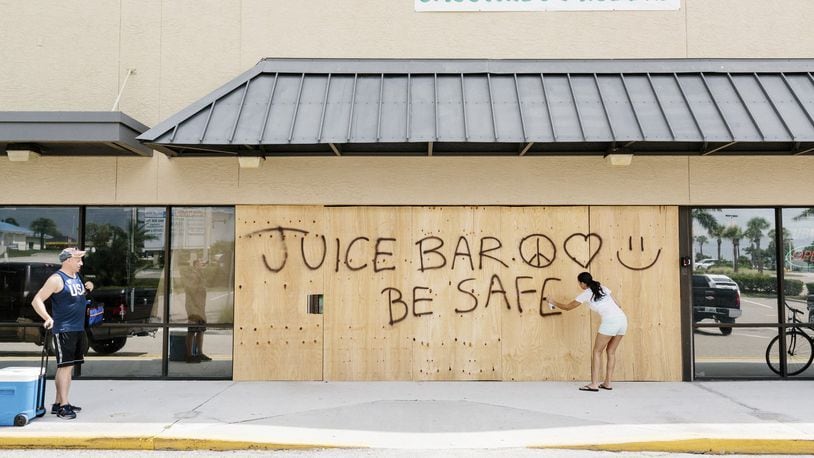In October of that year Hurricane Wilma — considered the most intense hurricane on record — took the lives of 22, according to Accuweather.com, and added to the mounting price tag. In all, the 2005 season cost more than $143 billion — $108 billion for Katrina alone, according to the National Oceanic and Atmospheric Administration.
Paying for the 2017 disasters will likely consume Congress over the next several months, but right now Floridians want to know only one thing: Are we prepared?
For its part, the Federal Emergency Management Agency — which coordinates disaster response and recovery for units throughout the country, including from this area — insists that it is. A spokesperson for the agency said more than 31,000 federal employees are helping to support Harvey recovery efforts even as more than 700 federal employees — including 370 FEMA staff — prepare for Hurricane Irma.
RELATED: Hurricane Irma and air travel: 7 things to know
Matt Hochstein, a director at Hagerty Consulting, which does consulting on emergency management, said the agency is set up to support local and state efforts, not replace them, and relies on response units like Task Force 1 in Dayton to help where needed.
David Letson, a professor of marine affairs at the University of Miami, said resources will be stretched thin if Irma hits Florida with all its might, particularly since so many units are still engaged in helping with Harvey recovery.
But, he said, “We’re a wealthy country with an advanced public health system. So if we look at the way we deal with this as compared to nations in the Caribbean that will have to do it, we’re far better off.”
The American Red Cross last week expressed confidence in its ability to assist Irma victims, saying as it began responding to Harvey, about half of its sheltering resources were held in reserve in case of a second disaster.
“The Red Cross has robust disaster response capabilities, which allow the organization to respond to two significant disasters like Hurricanes Harvey and Irma without compromising the assistance we provide to those in need,” the organization said in a statement.
RELATED: Ohio Task Force 1 told to be ready
Local impact
As thousands fled Florida to avoid Irma’s wrath, communities in faraway places like Ohio were impacted in different ways. About two dozen military aircraft were evacuated to Wright-Patterson Air Force Base from, among other places, the Naval Air Station in Jacksonville.
Other units too could use Wright-Patterson as a refuge from a storm whose power has many bracing for epic devastation if major population areas are struck.
Airlines late last week struggled to keep up with demand as flight delays and cancellations stranded travelers. Several airports announced a close to commercial travel on Saturday as they braced for the storm’s impact.
Allegiant Air, which has the only non-stop flight from Dayton International Airport to Florida markets, cancelled its scheduled run on Friday.
Members of Task Force 1, the Dayton-based response team that brought dozens to safety in Houston, learned less than 24 hours after returning that they may be redeployed for Irma. Phil Sinewe, public information officer for Task Force 1, said the Irma force could be twice the size of the nearly 50 members who worked impossibly long hours in Texas.
Worst to come?
Just as in 2005, there are fears that the worst of the hurricane season is yet to come.
Corene Matyas, an associate professor of geography at the University of Florida who studies the frequency of hurricanes, said conditions are “extremely favorable” for hurricanes now.
Even as Irma blew through the Caribbean, flattening buildings and tallying fatalities, Hurricane Jose headed for the Atlantic just two days behind and packing winds that matched Irma’s 150-mile-per-hour thrusts.
“We are in the climatological peak of hurricane season this time of the year,” said Matyas, who noted the U.S. has been largely spared from being hit by a hurricane for years. “Statistically speaking, we were due.”
FEMA took a major public relations hit after Katrina, as paperwork delays and other problems gave the impression of an agency in disarray. Since then, FEMA has spent more than $2 billion to train and prepare local authorities, said Kathleen Fox, FEMA’s acting deputy administrator overseeing disaster preparedness.
At the time of Katrina, a survey by the agency found that only about 40 percent of communities had confidence in their plans. That number has grown to 80 percent, she said, adding, “We’ve made enormous progress.”
Staff Writers Barrie Barber, Tremayne Hogue and Kara Driscoll contributed to this report, which also includes information from The New York Times.
About the Author
